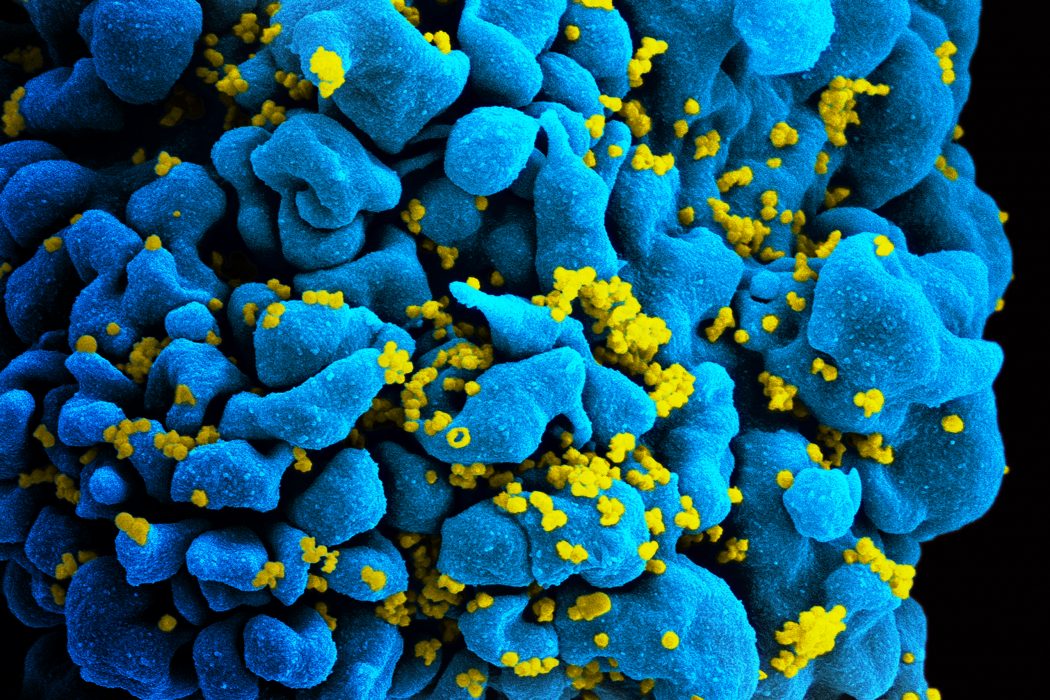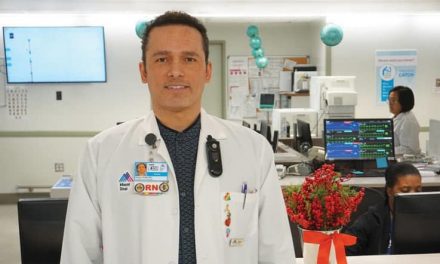The world knows him as the “London Patient,” the second known person in the world to have been “cured” of HIV. A year after we first heard of him, the “London Patient” had chosen to reveal his identity because he wants “to be an ambassador of hope” to those “who have HIV or cancer as well as those people who have gone through a transplant.” He said to New York Times, “This is a unique position to be in, a unique and very humbling position.”
Coming out and telling his story was not an easy decision for him to make and it took him several months to prepare himself physically and mentally but he did it because, “I don’t want people to think, ‘Oh, you’ve been chosen,'” he told New York Times. “No, it just happened. I was in the right place, probably at the right time, when it happened.” He added that it’s thanks to the support of friends and family that, “we’re here today — you never, never know.”
“He” is Adam Castillejo, 40 years old. He is of mixed Spanish-Dutch heritage who hails from Venezuela but had been living in London for 20 years now and here is his story.
Mr. Castillejo was 23 when he was diagnosed with HIV in 2003—a time when an HIV diagnosis was still seen as a death sentence. He described it as a “very terrifying and traumatic experience to go through” but thanks to the antiretroviral drugs, his HIV was suppressed to undetectable levels. Fast forward to 2012 and he was diagnosed with Stage 4 lymphoma, a blood cancer.
In 2016, Mr. Castillejo’s cancer battle had taken a turn for the worse and his doctors performed a bone marrow transplant to “replace his immune system and clear the cancer.” His donor (not related to Mr. Castillejo), is a carrier of ‘CCR5 delta 32,’ a genetic mutation resistant to HIV that prevents the entry of HIV into cells, thereby clearing Mr. Castillejo of the virus as well.
Mr. Castillejo continued to take his antiretroviral drugs for 17 months after the transplant up until October 2017. After which, his doctors had waited another 17 months to announce to the world in March 2019 that he had been cured of HIV. According to the researchers, Mr. Castillejo “has been in remission for 30 months ‘with no viable virus in bloods, brain fluid, intestinal or lymph tissue.'”
Professor and HIV biologist Ravindra Gupta of the University of Cambridge and Mr. Castillejo’s virologist, said last year that the treatment was Mr. Castillejo’s last chance to survive. Today, Dr. Gupta—who had been cautious of calling it a cure last year and opted for the word “remission” instead—had said, “We think this is a cure now, because it’s been another year and we’ve done a few more tests.”
“I want to be an ambassador of hope,” says Adam Castillejo, who is the second person to have been cured of H.I.V. https://t.co/TuiPud06aN
— NYT Science (@NYTScience) March 10, 2020
While the treatment had proven to be successful as both Mr. Castillejo’s cancer and HIV had gone into remission, the procedure however, is considered a risky one and is performed only as a “last resort” even in patients who have both HIV and cancer. Still, Anton Pozniak, president of the International AIDS Society, said that, “Although it is not a viable large-scale strategy for a cure… these new findings reaffirm our belief that there exists a proof of concept that HIV is curable.” He added, “The hope is that this will eventually lead to a safe, cost-effective and easy strategy to achieve these results using gene technology or antibody techniques.”
The first patient to be cleared of HIV was an American man named Timothy Brown who lived and underwent similar treatment in Berlin. His cure was first announced at the 2008 Conference on Retroviruses and Opportunistic Infections where Mr. Brown was called “The Berlin Patient.”
Read more about Mr. Castillejo’s story here and here.










While the patient is functionally cured, he still needs to take meds. Ironically, instead of drugs designed to quell the virus that can cause immunodeficiency, he is taking meds to suppress his immune system to prevent rejection of the transplanted marrow. So, while the HIV disease is cured, his medical regimen is not all that different. In fact, because of a suppressed immune system, he probably needs to be more careful about infection risk now. So, given the high-risk nature of this sort of treatment (bone marrow transplant), this is not an option for most people. But demonstrating that CCR… Read more »
Good points there. Bone marrow transplants and perpetual immune suppression don’t seem like a cure to me. More like a prisoner switched from the death house to life without parole. Still, it is a rather expensive step in the right direction. Probably not the best place to be with the latest pandemic though.
And what was the total cost of this ‘cure’? Billions? All so that teahouse tricks can go bareback without fear of HIV. We can now go back to old fashioned STDs like syphilis and antibiotic resistant gonorrhea. Because condoms are just so bothersome, right?